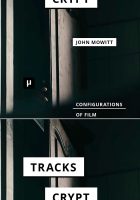- Language english Pages 48
- Publishing Year 2019
- Series Configurations of Film Series
-
ISBN:
- 978-3-95796-003-0 (PDF)
- DOI:
- 10.14619/0030
- Available as PDF
- License:
- CC BY-SA 4.0
Tracks from the Crypt
David Bowie’s 2015 Blackstar has been understood by critics and fans alike to have a certain valedictory status. For them, perhaps for us, it is a 39-minute and 13-second farewell. A long goodbye. My angle is different. By situating the Bowie/Renck collaboration on “Lazarus” in the context of a meditation on the question once posed by Georg Stanitzek, “Was ist Kommunikation?” I consider the CD and the video as experiments in re-configuration. More specifically, by thinking about the distinctly cinematic iteration of the question of communication (citing here Captain’s “what we have here is … failure to communicate” from Cool Hand Luke) I propose that mediated communication embodies the Ich/Es modality of dialogue disparaged by Martin Buber. What this invites us to consider is whether “Lazarus” in particular isn’t the generation of an audiovisual tombeau from which or out of which communication strains are to be heard. Is it “saying” farewell? Is it “saying” anything? By drawing on Jacques Derrida’s appropriation of the crypt in the work of Abraham and Torok, I propose that “Lazarus” manages (and the feat is neither small nor insignificant) to communicate nothing. In effect, “Lazarus” is the very sound, not of a failure to communicate, but of a “speaking” emptied of what protects it from mediation. Here, Bowie’s gnomic persona assumes a political valence not typically ascribed to it.










